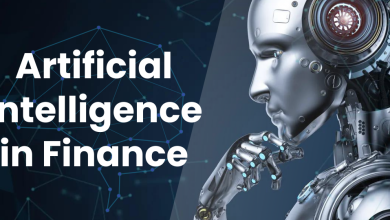
Artificial Intelligence and Machine Learning are currently in high demand, and everyone is trying to jump on the bandwagon. And when you want to build the best AI application, Python is an excellent language to proceed with.
Python’s accessible syntax, robust ecosystem, and powerful specialized libraries have made it the “poster boy” for AI development.
In this blog, we’ll elaborate on using Python for AI development, along with the frameworks and tips for achieving this.
Why Choose Python for AI Development?
Simply put, Python is a simple, easily readable language, lowering the barrier to entry. So, developers and data scientists can use it to solve complex AI problems rather than dealing with intricate syntax. Let’s look at the reasons in detail.
Simple Syntax & Fast Prototyping
Python offers a clear, English-like syntax. So developers can just focus on solving complex AI problems rather than deciphering intricate code. You can expect faster prototyping thanks to this readability.
Data scientists can quickly test hypotheses and iterate on models. You can expect a rapid transition from concept to a working proof of concept.
Flexibility
Python is a versatile general-purpose language. It supports multiple programming paradigms like object-oriented, functional, and procedural styles.
An AI project might require a statistical model, a neural network, and a web API to be seamlessly integrated. In that case, Python’s flexibility will be crucial.
Platform Independence
As an interpreted language, Python code can run on any operating system without requiring modifications. So AI models built on one machine can be easily deployed and scaled across environments. That is, even from a local server to a cloud-based infrastructure.
Rich Ecosystem of Frameworks & Libraries
Python offers pre-built libraries and frameworks, which is its greatest strength. The likes of TensorFlow and PyTorch can handle heavy-duty neural network computations. There’s also Scikit-learn, which offers ready-to-use algorithms for classic ML. So you won’t need to build complex tools from scratch.
Huge Community & Reliable Support
Another advantage of Python is its large, active developer communities. That means there is extensive documentation and countless tutorials available. Developers can also access robust forums to find solutions, share knowledge, and get support.
That drastically reduces roadblocks and accelerates the entire development lifecycle.
Best Python Libraries for AI
Arguably, the biggest advantage of Python for web development is its specialized libraries. They minimize the complex mathematical and computational challenges. So you, as a developer, can focus on designing user-friendly models and train them for the best results. There’s a vast ecosystem available, but a few key libraries are at the base.
TensorFlow (with Keras)
TensorFlow is an end-to-end, open-source library for machine learning and is developed by Google. You get the high-level API, Keras, directly integrated into TensorFlow as tf.keras.
Purpose
The purpose of TensorFlow, is to offer a flexible ecosystem of tools, libraries, and community resources. With that, the researchers can push advanced ML tech, so developers can build and deploy ML-powered apps with ease.
Best for
TensorFlow is best suitable for production-grade deployment, especially on embedded devices and large-scale systems. With it, you can build and train complex deep learning models, such as deep neural networks. You can use it for outstanding distributed training.
PyTorch
PyTorch is an open-source machine learning library built by Meta’s AI Research lab (FAIR). It’s known for its intuitive, Pythonic approach, and dynamic computational graph.
Purpose
The purpose of PyTorch is to accelerate the journey from prototype research to production deployment. You get a strong GPU acceleration for deep learning research requiring max flexibility and speed.
Best for
PyTorch is excellent for rapid prototyping, academic research, and projects with dynamic computational requirements. It offers a straightforward coding style for experimentation. So new developers trying their hand at deep learning can have an easier time.
Scikit-learn
Scikit-learn is a free Python artificial intelligence library for the Python programming language built on SciPy, NumPy, and Matplotlib.
Purpose
The purpose of Scikit-learn is predictive data analysis with simple, efficient tools. That makes it accessible and reusable in various contexts. Rather than just specifically building neural networks, Scikit-learn is focused on modeling “data”.
Best for
Scikit-learn is suitable for implementing traditional machine learning algorithms, data preprocessing, feature selection, and model evaluation. It’s the fundamental toolbox for most of the standard ML problems.
Essential Python Tools for AI Projects
Python offers a range of machine learning frameworks, productivity tools, code-generation assistants. They can help accelerate development and support every stage of the AI workflow. Let’s discuss a few.
NumPy and Pandas
These are foundational libraries for handling numerical data (NumPy) and structured datasets (Pandas). They cover the basic data manipulation in Python.
Purpose
NumPy and Pandas are meant to efficiently store, manipulate, and process large data volumes. They transform raw info into a clean, structured format, which will be ready for AI models to consume.
Best for
NumPy is ideal for complex mathematical operations on multi-dimensional arrays. Pandas, on the other hand, is perfect for data wrangling, cleaning, filtering, and aggregating tabular data before analysis.
Matplotlib and Seaborn
Matplotlib and Seaborn are the libraries for creating static, interactive, animated visualizations. Seaborn is based on Matplotlib and provides the developers with a higher-level interface.
Purpose
These tools can help translate complex data patterns and model results into clear, insightful graphs and charts. That makes it easier to understand trends, relationships, and outcomes.
Best for
With Matplotlib, you get fine-grained control for creating highly customized plots. And Seaborn can help quickly generate statistically-oriented and aesthetically pleasing visualizations with fewer lines of code.
NLTK and spaCy
NLTK and spaCy are leading libraries for Natural Language Processing (NLP). NLTK is a comprehensive academic platform, while spaCy helps with real-world applications.
Purpose
The purpose of these tools is to help process, analyze, and derive meaning from human language data. So AI models can understand speech and text.
Best for
NLTK is excellent for education and research, offering a wide array of algorithms and linguistic data. spaCy is designed for industry use. It provides fast and efficient NLP pipelines for entity recognition, text classification, and more in production environments.
Python Programming Use Cases in Artificial Intelligence
As you can see from the previous section, Python offers a range of libraries and frameworks. They can help with applications across the field’s most transformative domains. With the tools in Python’s ecosystem, you can build intelligent systems that learn from data. Here are the use cases of the same:
Image Recognition and Computer Vision (self-driving cars, healthcare imaging)
With libraries like TensorFlow and OpenCV, you can use Python for interpreting visual data. You can use this capability as a foundation to develop self-driving cars that effectively navigate environments. Plus, it can help with advanced healthcare imaging systems for detecting anomalies. Like tumors in MRIs and X-rays with high precision.
Conversational Bots and NLP Applications
Through libraries like spaCy and NLTK, Python lets machines process, understand, and generate human language. With it, you can create sophisticated conversational AI. That means everything from customer service chatbots for resolving queries to virtual assistants for context and intent comprehension in conversations.
Predictive Analytics in Finance, Retail, & Healthcare
Scikit-learn and Pandas can help build predictive models by analyzing historical data.
- In finance, it can be used for detecting fraudulent transactions.
- In retail, you can use them to forecast inventory demands.
- In healthcare, it can help predict patient health risks.
All that means proactive, data-driven decision-making across critical sectors.
How to Create a Conversational AI in Python?
Creating a conversational AI, like a chatbot, involves processing user input, determining intent, and generating a relevant response. The complexity can range from a simple rule-based system to a sophisticated AI using machine learning.
Define the Scope & Type
Begin by precisely defining your AI’s purpose. Will it be a simple, rule-based chatbot for FAQs, or a more advanced AI assistant that learns from conversations?
A narrow, well-defined scope ensures focused development and prevents the project from being unmanageable. This initial decision dictates the complexity of the required tools and data.
Process Language with NLP Libraries
To understand user input, your AI must parse language. Leverage Python’s Natural Language Processing (NLP) libraries like spaCy or NLTK to break down sentences.
These tools handle critical tasks like tokenization (splitting text into words), identifying parts of speech, and recognizing entities.
Train Your Model with Quality Data
An AI’s intelligence is directly proportional to the quality of its training data. Use large, real-world conversational datasets relevant to your defined scope. For a customer service bot, this would be past support tickets.
Frameworks like Rasa use this data to train machine learning models. They help understand user intent and context, moving beyond simple keyword matching.
Generate Contextual Response
The final step is formulating a relevant reply. Based on the understood intent and context from the previous steps, your AI selects an appropriate response.
This can range from retrieving a pre-written answer from a database to using a trained model. It can generate dynamic, human-like text, ensuring the conversation feels natural and purposeful.
If you want help with building the best conversational AI model with Python, get professional Python development services. They can analyze the right framework for the application and get the best results.
Bottom Line
Python is not only the most computationally-powerful language, but also the most accessible one. It offers clear syntax, comprehensive libraries, and a supportive community. So you can use Python for AI development with a lower barrier to entry.
With Python, you get a range of tools and libraries. They help you with everything from a simple script for automating a task to a sophisticated neural network that predicts market trends.
So if you want to build the best machine learning frameworks, use Python programming language for artificial intelligence.




